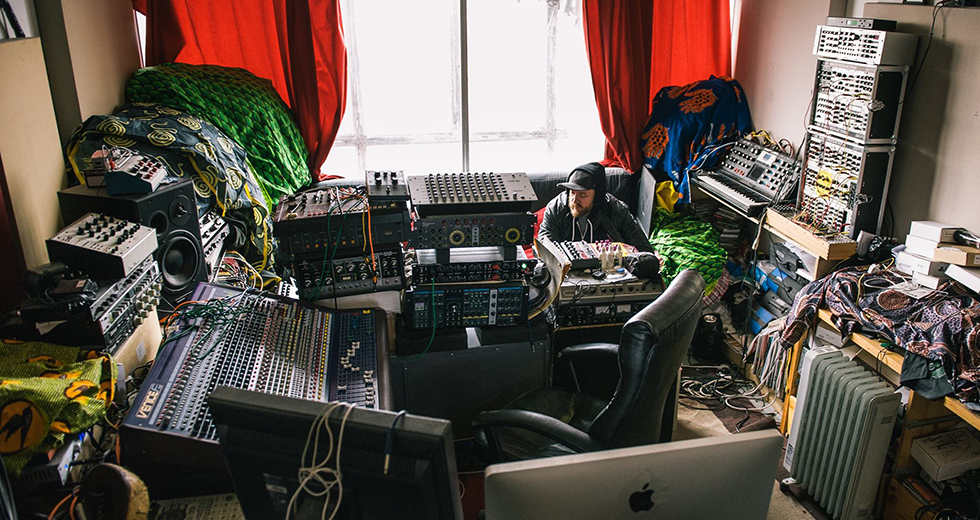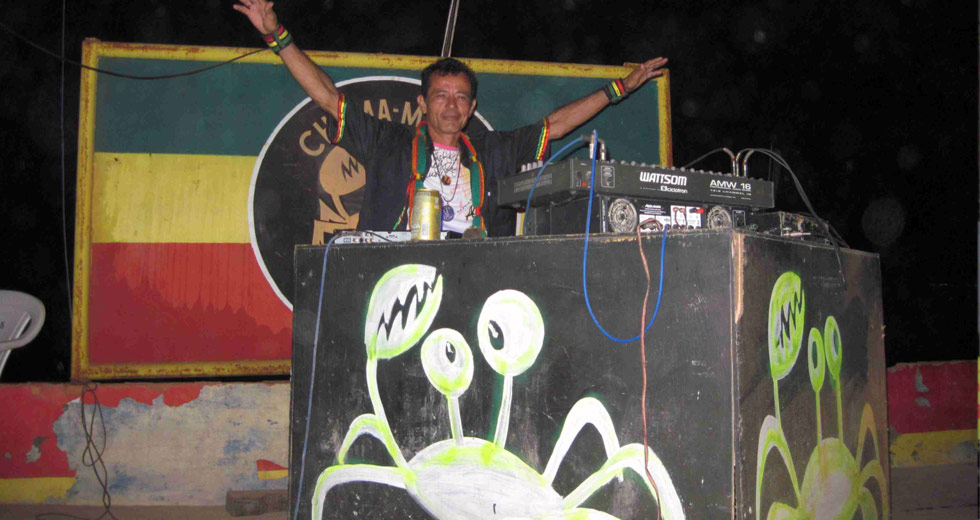The Rise And Fall Of East London’s Soundsystems
Matthew Bennett talks to The Ragga Twins, Shut Up & Dance, Wookie and more about the heyday of sound-system culture in East London.
“We’d be too young to get in to the dances, but we’d go hear the big names play from over the fence,” smiles Jamaican singer Neville Grooves from his adopted Stoke Newington home of 45 years. “In the late ‘60s in Jamaica we’d run around ALL the dances, listenin’ outside. We’d walk three or four miles to hear dem chat and sing, people like U-Roy Sound. Even then I say to myself ‘I wanna be a selectah!’”
Hackney was THE place to party in London.
Such profound commitment in a 10 year-old boy is routine in the universe of reggae sound-systems. Neville indeed became a singer, and one of London’s ghetto heroes too. During the week, he drove buses. At weekends his passengers might go hear him alight dances with his sweet voice and killer songs. Neville was just one of hundreds of thousands of Jamaicans that sailed the Atlantic to Britain after the Second World War. With the colonial guarantee of work, they escaped the growing pains of independence back home.
Many settled in Hackney. As Caribbean customs and musical traditions were transplanted wholesale, their music quickly seeped into the tangled streets. This neglected east London borough became known as the best place to soak up the songs and the spirits. “There was no ‘ifs’ nor ‘buts’,” affirms Smiley, one half of Hackney-born jungle pioneers Shut Up and Dance. “Hackney was THE place to party in London. It’s the Jamaican people and the black culture brought from the Caribbean, they just brought the vibe and mixed it in with what was already here.”
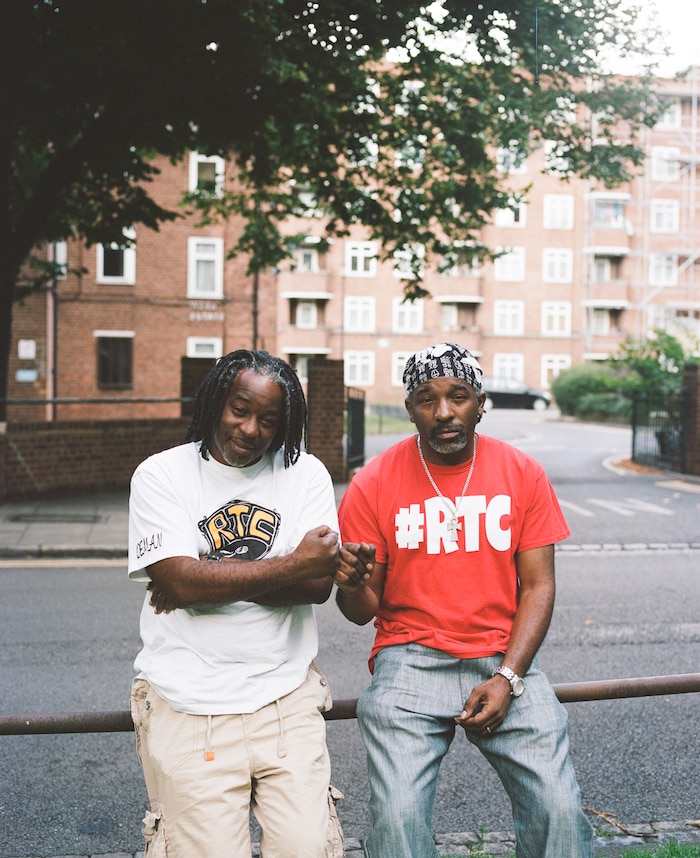
Incredibly, no one can comfortably hazard a guess at how many sounds existed in Hackney. Mainly because anyone loosely in love with reggae had one, even if it was just “an ickle ting” – like one speaker used for a house party. They were all homemade too, normally with zero advice and zero money.
Flinty Badman, one of Hackney’s most celebrated MCs and one-half of the Ragga Twins describes how he started. “My first sound started in woodwork at school,” he chuckles. “I was 15 years-old. We were five mates from school and it was called Sir Cruise. The teacher was like, ‘Aww this is nice, this can go in the exhibition!’ When we finished it, we just sneaked it out of the back of the school. It was big as well; very hard to sneak it out.” Sir Cruise printed up flyers to hand out at school then charged their mates to come and party in their uncle’s basement. “We invited down a sound called Sir Lena, who were these boys,” Flinty says, pointing across the room at PJ and Smiley, who even by this age were onto their second sound system.
The economic winds ensured that many of these proud sonic incarnations were built from “reclaimed” plywood from building sites. Flinty’s pals had other schemes too. “A few of my mates went and robbed the speakers. Like the Tannoys at school? They got robbed. We only had our pocket money, and that had to be spent on records really. You needed a good selection of tunes, otherwise there was no point.”

As ever, with boys and their toys, it quickly escalated into a fierce arms race. Thirty years ago, sound complaints didn’t really exist, so it was a noisy and frantic bid for ascendency, played out in parks, empty halls, clubs, blues dances and cavernous house parties. Due to huge swells of masculine pride, few dared to ask for advice on actually how to engineer them.
Smiley frowns at the memory of all of the effort he’s had to put in. “It went on for years and years! My twin brother chose to do electrical engineering at college, and I chose carpentry. So careers inspired by our sound system. It soon became a second job! If we weren’t studying, we were making speaker boxes, or printing flyers or going round handing them out. Or in record shops looking for tunes.”
At the tender age of 17, PJ, Smiley and his twin brother Earl hit their stride with their third sound-system: Heatwave. They had DJ Hype cutting up reggae and hip hop on two decks as the boys rapped, MC’d and danced. Even at this stage their sound had 12 massive bassbins, a number Smiley described as “madness.” They used to kick off the doors to empty houses, get the electricity back on, then hold huge raves for two days at a time.
And, naturally, the boys had to keep abreast with the seething arms race: “From late Friday night you’d get in from a rave, then you’d have to go out again to see what a certain sound system were playing,” remembers Smiley. “There were no camera phones then, you had to go and register a lot of information in your head: ‘What have they got?’ ‘Why does it sound like that?’ ‘Why have they got flashing lights like that on their amp?’ ‘How much will it cost to get that?’”
This vast level of fanaticism was replicated across nearly every neighbourhood in the ‘70s and ‘80s. Neville Grooves recalls a story of going to see the most enduring sound-system of all time, and how this dedication was manifested. “I remember going to see Jah Shaka in Reading not too long ago,” says the 55 year-old. “And they didn’t turn up on time. So when they came in, there’s Shaka with big trailing locks and his men, all lifting boxes. They all look about 80 years-old. But it’s the same guys lifting that were back in the ‘70s lifting Shaka sound into (club) Phoebies! These same men’ve been carrying his boxes for 40 years!”

Yet such seemingly menial roles pulsed with prestige. And Neville’s weekend prestige has never dimmed either. In 2001 Neville was walking through Clissold Park in northeast London and stumbled across Solution Sound who were strung up and playing out. Solution was a new rig, ambitiously started in the late ’90s, a period which could be considered the nadir of sounds. Neville shook a few familiar hands. Then he sang a couple of songs and wandered off happy. He just likes to sing. It was several years later that Mark from Solution managed to track him down and invite him to be their full-time singer, alongside Poizon, their MC.
“Everyone said we were mad to start a sound in the late ’90s,” explains Mark. “They said that we’d never get anyone turning up. Although I had no idea what we were getting ourselves in for. It started off very idealistic, then the reality of storage, transport, lifting and maintenance kicked in. Suddenly you go: ‘Shit! None of us drive!’”
Following a sound has always strafed with rivalry and passion. Often with the glory and frustration familiar to long-suffering football fans. Many speak of a “Premier League” of sounds with a tangled Championship beneath them. And exactly like the delicate coherence of a sports team, the technical chain of analogue parts were also prone to embarrassing inconsistencies, as Deman Rockers, Flinty Badman’s equally legendary brother explains. “It’s like a Cup final, yeah? Your sound might have an off night. Like when Wigan beat Man City, they aren’t a better team. Man City just had an off night.”
Deman Rockers fought his way up through the ranks of local sound-systems, initially on Jah Marcus from Tottenham after his sister dated the soundman. But soon he’d been invited to MC on Unity by the renowned selectah Ribs, a man whose sound held a decade-long residency in the underground Mecca of reggae, The Four Aces Club in Dalston.
It took a while for Deman to adjust when he moved to a top sound. “On Jah Marcus I was the first team player, but when I left to join with Unity I was warming the bench. I was playing a bit part.” The humiliation of rarely getting the mike passed to him thrust Deman into 12 months of intense focus in which he transformed into a truly dangerous mike man.
I always said Deman was the first ghetto celebrity I ever knew. He had a normal 9 to 5 job, but when he walked down the street people would rush at him.
This was around 1983. Sound-systems work in cycles, as much of music tends to do. The ’70s saw many clashes, before the hunger for them dwindled towards the close of the decade. But as the ’80s approached their mid-point, “battle sounds” became prominent once more. As Smiley points out, “I knew of Unity before Deman was on it, but when Deman arrived at Unity he made it big with the kids because he turned it into a killing sound. Jesus, it was addictive to watch! I always said to him that he was the first ghetto celebrity I ever knew. He had a normal 9 to 5 job, but when he walked down the street people would rush at him.”
Deman and Flinty deny that they were aggressive MCs. They claim they were forced to defend themselves. “Saxon caught us off guard once in Reading,” says Deman. “It wasn’t terribly off guard. But we weren’t ready; we didn’t go there for that. So from that day we said, ‘Let’s never let that ambush happen again.’ We wrote a bag of lyrics where anyone’s name can go in the gap. These lyrics go in your suitcase that you walk with, and if you ever need to open that suitcase then you open it, and do what you have to do.”
So which other sounds or MCs would The Ragga Twins be most scared of? Flinty’s eyes quickly darken. “We wouldn’t be scared of anyone! More wary. And Saxon made us wary of ALL their MCs. They liked clashing, that was their thing. They loved running down MCs. We could defend ourselves, but we rarely started anything.”
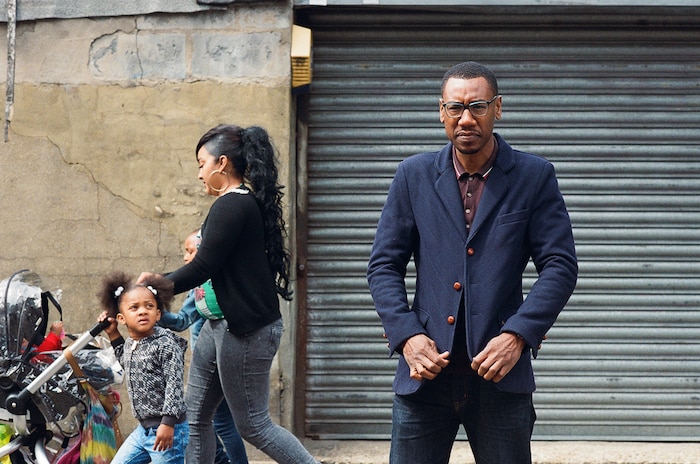
So how does a sound clash actually work? Wookie handily breaks down the culture into bite sized chunks. “A clash is where two sounds are playing each other. The clash is based on who has the better music. So you might play a Dennis Brown tune, which is a fairly well-known record. Now, my counteraction to that is to play a very rare Dennis Brown tune that only I have. Or, even better, I’ve paid my money and cut a dub of it. I’ve gone to the source and got something rare. Or, even better, I’ve gone and got Dennis Brown to sing your version that you have on record, but I have on my own dubplate. It’s all about upstaging your rival. And the judge is the people. So that’s where all the phrases ‘ball forward’ and ‘rewind’ come from.”
Wookie laughs manically as he remembers when his dad, deeply entrenched in the scene, came home from a clash having hurt his hand from smacking a wall too hard. “It was just to make enough noise to celebrate a 30-year-old piece of vinyl that one person has that the other one hasn’t!” giggles the producer.
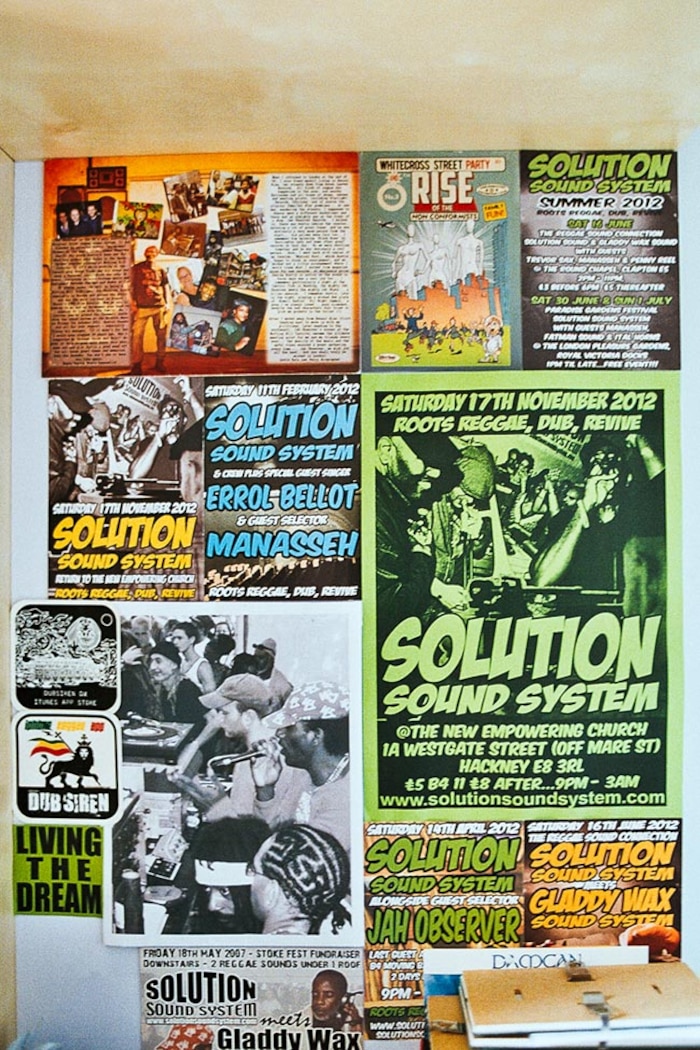
Yet dubplates weren’t the only way to gain an advantage. There was voodoo in the circuitry. The sounds were constructed via a myriad of secretive and bespoke processes. Colin Bird, friend of Solution Sound and an amp electronics technician, witnessed firsthand how far some British soundmen would go. “I think the Jamaicans pioneered certain aspects of sound-system culture. But the big thing in the UK was for EVERYTHING to be exclusive, for custom builds. They needed a custom amp no one else had got. The UK took the exclusivity of the dubplate borne from Jamaica and applied it to all the analogue components.”
One such mysterious amp builder was a man called Barracuda. He constructed unique amps so large that three men would have to carry them. By the time Shut Up and Dance were purchasing their mighty amp for their Heatwave Sound, he was charging £1 for 1 watt. And even a youth sound like them needed 3,000 watts.
There’s dis white dude with long hair loadin’ in his boxes. When he turn’ on the bassline? Jesus Christ! The whole hall was shaking!
One of Barracuda’s technical descendants was Jah Tubbys, a sound that Neville Grooves would eventually sing on. Tubbys was a white man named Keith who was regarded by many as having the loudest rig in east London. “One time Tubbys came down to the Lecture Hall in Tottenham, Jah Marcus invited him down to play,” remembers Flinty Badman. “But everyone is outside tutting. ‘Who’s dis Tubbys? We never heard of no Tubbys? We know King Tubby’s, we don’t know no Jah Tubbys?’ Then there’s dis white dude with long hair loadin’ in his boxes. When he turn’ on the bassline? Jesus Christ! The whole hall was shaking!” here Flinty makes weird spasm noises before finishing his anecdote with a cackle, “‘Dat’s Tubbys just turned on den!’ EVER’BODY ran inside. Dat place shook all night, he murder’ dat place.”
Neville Grooves was one of Tubbys key weapons for years, and he equally finds happiness in remembering the power of his old sound. “Jeez. Tubbys would be jerking up the whole place, but he was a white man!” At this point Neville laughs hysterically for some time. “So back in the day, imagine if the white boy have a heavier sound than the black man?! Ha Ha!”

In today’s hyper connected world, the fact that reggae fans in Tottenham hadn’t heard of Hackney hero Jah Tubby’s seems strange. The two areas are only four miles apart. But pre-Internet everyone lived in comparatively isolated cultural and geographical pockets. As a result, sound-systems performed a similar role to your precious news feed. Deman says that on the night of the Conservative Party bombing in Brighton in 1984, he was mashing up a dance hall with his politicised news on the mike, chatting rhymes about the IRA.
Flinty follows up. “Take da big dances: Unity, Sir Coxsone and Saxon. For the whole week ever’one was talking about dem,” enthuses Flinty. “What dey gonna wear, what time dey setting out, how much weed dey bringin’. Nobody is missin’ dat dance! It’d be the word on da street, ever’one would hear about it. And when you were out on a Saturday talking on the mike you’d be talking up what you’d be doing for the next four weeks. It was educational; at that time you’d write lyrics topically like things that were going on. So we sang tracks like ‘Iron Lady’. I had lyrics about society that they might not have known about.”
One of the reasons the sounds hit a decline was the internet. Neville Grooves laments the change. “It’s hard to have rivalries when everyone can get the same tunes. Also, soon as someone only put one sound-system in a hall, then all the DJs come and play on it. There can’t be a rivalry with just one sound. Back in the day, everyone brought their sound because they wanted to prove that their sound was better than everyone else’s. It changed completely.”
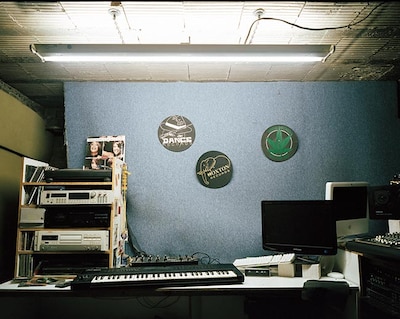
Smiley expands on the demise of the culture. “The MCing situation went down because of dubplates. The sounds would play dubplates of the singers instead of the singers doing their stuff. The dubplate got so big that the mike men became obsolete. That started it. Then the clubs got big, Maggie Thatcher stomped on the rave scene... but then again she stomped on everything. Noise, licensing, police everything. It was loads of things combined.”
20 years later, and there is a hobbyist revival in building sound-systems, however the old guard such as The Ragga Twins or PJ and Smiley can see no way that the sounds could return to their former glory. There’s no abandoned halls to play. The sound laws are too fierce. All the clubs now have their own PAs. And there’s two generations who’ve missed the whole scene who now wouldn’t grasp the culture.
I preferred the sound systems, I like to watch the people enjoy it, watch them smile.
What is left is an immense legacy. “There has never been a type of music that has brought as wider influence than what sound-systems brought,” explains Wookie. “Grime and MC culture is completely descended from sound-system culture. Pass the mike? That’s completely reggae culture. If you listen to ’70s reggae like Super Cat and Brigadier Jerry, they are passing the mike from left to right, as a stage show, all doing 16 bars. Then there’s hip hop. I’m a staunch believer that without reggae you wouldn’t have hip hop and rap the way it is, nor grime. Talking on records was started by Jamaicans. Kool Herc was Jamaican. Biggie Smalls’ mum was Jamaican. That happened in the late ’70s in the US, but not before the late ’50s and early ’60s saw Jamaicans talking over records. Nothing else has had this effect. So sound-system culture has to be preserved because you don’t know what else it’s going to do. The way it has come full circle already; it will go and do something else.”

Smiley is equally emotional, but significantly more resigned. “It had to change because nothing can be the same forever, but the problem is that when things move on, then some things get left behind. And sometimes they don’t deserve to get left behind because it’s such a good thing.”
Finally, we are left with Neville Grooves, a man who has lived his entire life dreaming of his next chance to sing or play a record. “I could have gone into the studios and become a singer. But I didn’t. I preferred the sound systems, I like to watch the people enjoy it, watch them smile. Money never crossed my mind. I just wanted to hear my basslines, my tops and mids! And people singing! That’s all I wanted. It takes me back to being young in Jamaica and hearing everyone singing over the fence and that’s all I ever wanted to do man, run a sound system.”
The man flashes his gold teeth with a shy smile and nods towards his massive speakers stacked in his modest house, then bids us farewell with these heartfelt words: “Sound systems make you feel good. No one lives forever; your life is just moments, the whole planet is just many different moments. And nothing in life will beat your greatest moments… and most of my greatest moments of the last 40 years came from singing on the sounds…”
All photos: Marc Sethi
Header image © Marc Sethi
